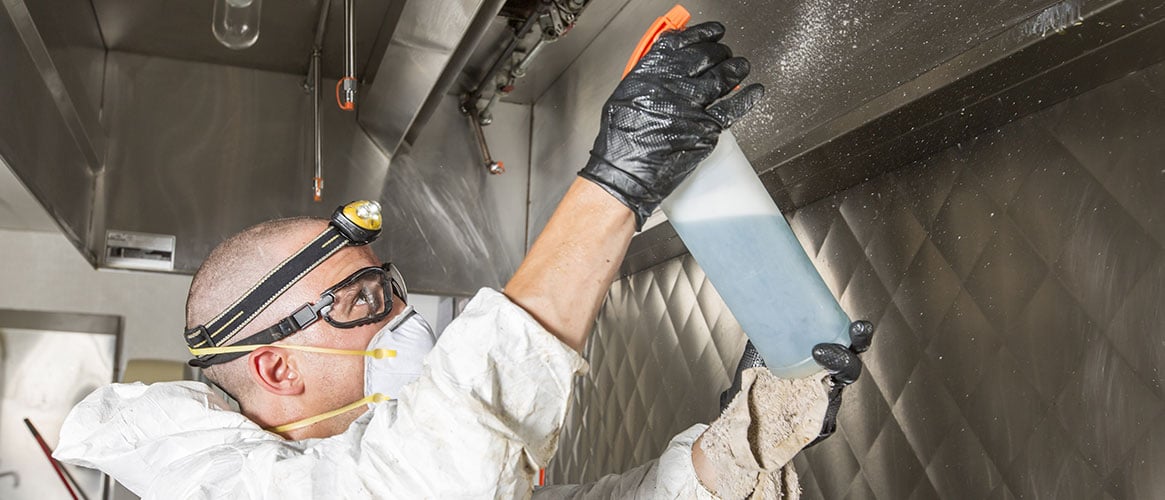Solvents are so common in many work places that workers forget how dangerous they are. A solvent can be generally described as a substance—usually a liquid—that is used to dissolve another substance. Solvents are found in a variety of products including cleaners, paints, floor polishes, and printer ink. Although solvents can be used safely, health problems can result from skin contact with solvents or from inhalation of their vapors. In addition to the health hazards, many solvent vapors are flammable and explosive.
What your employees need to know about working with solvents
One of the most common health hazards associated with exposure to solvents is dermatitis. Contact dermatitis can develop from a single or from multiple exposures. It can leave the skin susceptible to a short-term infection or to a chronic condition. Exposure can also result in sensitization to the solvent, which is a delayed allergic reaction that often becomes more severe with subsequent exposures.
One big danger with solvents is that they can cause trouble before you realize what’s happening. Depending on the type and concentration of the solvent, exposure effects can range from mild respiratory irritation to severe damage to body organs and systems. In extreme cases, overexposure to solvent vapors can cause respiratory failure and death.
What your employees need to do when working with solvents
It’s important to know what solvents are being used and what steps should be taken to protect against harmful or dangerous exposures. To optimize safety, follow these suggestions:
- Read the labels and the safety data sheets (SDS) of the solvents. They list the hazards, health effects, and safe handling procedures.
- Use recommended gloves, eye and face protection, boots, barrier creams, or other personal protective equipment as required.
- Take care when pouring solvents from one container to another, as fire or explosions can occur from static electricity buildup.
- Prohibit welding, cutting, soldering, and other sources of ignition in areas where solvents are used.
- Store flammable solvents in well-ventilated areas constructed of fire-resistant materials. Ground and bond all tanks and equipment for storage.
- Install readily accessible fire extinguishers in storage and work areas.
- Clean up solvent spills promptly. Never wash your hands with solvents.
- Be ready to respond in the event of emergencies. These include an employee coming in contact with a solvent or should something catch on fire.
- If possible, consider less-toxic solvent alternatives.
You also want to make sure the workspace is properly ventilated. If you need to use respiratory equipment, make sure it gives appropriate protection for the exposure.
What to cover at your safety meeting about working with solvents
Review and discuss solvent labels and safety data sheets, and remind your employees how these help protect them from injury and illness. Other areas to cover include:
- How to identify and use the proper PPE for the solvents your employees work with.
- Where to safely store solvents.
- How to clean up spills.
- What to do in an emergency.
Working with solvents may be dangerous, but doesn’t have to result in injuries, illnesses, or fatalities. Talk to your employees today about ways to protect themselves when working with these hazardous chemicals.

